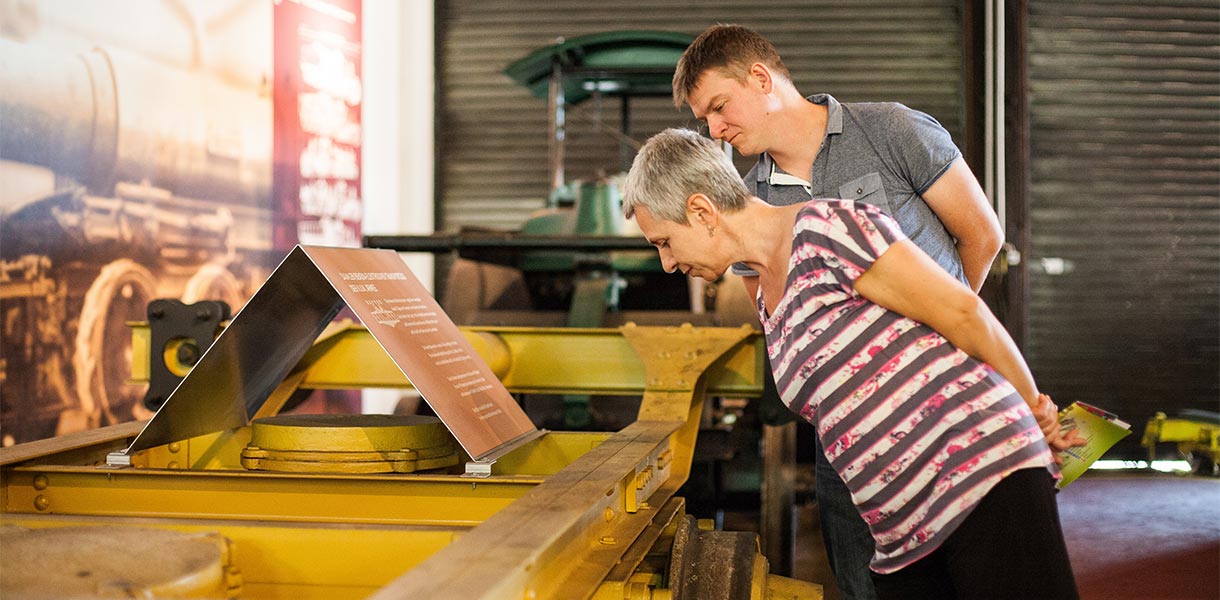The world's largest collection of wheeled trolleys and historic locomotives
In Austria, visit the world's largest collection of draisines and historic locomotives.
In the roundhouse built in 1880, the Southern Railway Museum first curated its exhibition on rail vehicles in 2007. In the first part, draisines, trains, and motor coaches as well as two-way vehicles can be seen across a total of 2,000 m² of exhibition space, as well as steam and electric locomotives in the second part.
The highlight is the ‘180.01’ steam locomotive, a loan from the Vienna Technical Museum. The exhibition on the historical development of standard-gauge draisines, railcars and motor coaches shows more than 40 original vehicles and reconstructions that were used in the period from 1838 to 1970 for railway supervision and railway maintenance.
The Austrian draisine collection in the Rundlokschuppen Mürzzuschlag
The collection shows standard-gauge small cars, now called Nebenfahrzeuge in German, which were in use in the period from 1838 to the 1980s at the ÖBB and its predecessors. These are vehicles that were needed for construction and supervisory services. The display features some original vehicles and some reconstructed objects in which many original parts have been installed.
As a view over the borders, models of small cars of foreign railways are displayed in dioramas in track H0.
The Viennese silk manufacturer Franz Aloys Bernard, who registered a patent in 1838 for a running machine that could be moved on tracks, is considered the inventor of draisines in Vienna.
The term ‘draisine’ comes from the district forestry superintendent Karl Friedrich Drais who lived in the Grand Duchy of Baden from 1785 to 1851. As early as 1813, he had invented a four-wheeled car with foot pedal drive for the road and in 1817 a wooden, steerable running machine, as a forerunner of the bicycle. It was not until 1842 that he built a car for railway tracks in Karlsruhe. He tried to market his running machine worldwide and so the name Drais remained in the memory of general public.
However, the mechanic Josef Bozek from Prague, also built (after the English model) a mechanical car – a driving machine – for route inspection, for the builder of the horse-drawn tram in Linz-Budweis, Franz Gerstner, in 1825. The construction itself was headed by the workshop director of the Prague Polytechnic School, Jan Soucek. It was the first known draisine on the tracks in Austria.
At the Austrian Federal Railways, the small cars were cared for for decades by the facilities in Wörth, near Spratzern and St. Pölten.
The collection is dedicated to all the railway workers and workers who have always ensured the safe and smooth operation of Austrian railways.
The second area of the roundhouse is dedicated to the locomotives. The mixture of exhibited locomotive types is exciting: from the ‘Gmunden’ of a steam locomotive in gauge 1106 mm to the literally ‘groundbreaking’ innovation of the Karl Gölsdorf class 180 locomotive and the legendary ‘Krokodil’ to the classic 1042 electric locomotive.
Probably the most outstanding locomotive is the kkStB 180 steam locomotive. This loan from the Technical Museum Vienna was a freight train tender locomotive of the k.k. State Railways of Austria, which was also procured by the Austrian Southern Railway.
Due to the increasing demand for powerful locomotives for coal transport on the North Bohemian routes, Karl Gölsdorf created, with the 180 series, the first five-coupled locomotive series. From 1901 to 1908, 181 units were delivered to the kkStB by the Lokomotivfabrik Floridsdorf, the Wiener Neustädter Lokomotivfabrik, the locomotive factory of the StEG and the Böhmisch-Mährische Maschinenfabrik. The Südbahn also ordered 27 units of wet steam engines for their mountain routes on the Semmering and the Brenner, all from Wiener Neustädter Lokomotivfabrik and Lokomotivfabrik Floridsdorf.
Head of Research:
(Ing.) Herbert Schirmböck
Exhibition design:
(Mag.) Hans Kudlich


